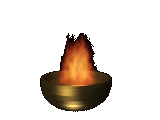

Saturn is linked to responsibility, structure and limitation. Saturn is a limiting force which can restrict our development.
The House position of Saturn shows that area of our life which is currently creating the most challenge or difficulty for us. For example, if Saturn is in the Fourth House (to do with the home) this could mean that we are currently experiencing domestic problems; or that our relationship with other members of our family were holding us back in some way. Note that, like Jupiter, Saturn moves very slowly. This means that any effects it has through being in a particular house will work over a very long period of time, and may not be noticeable on a day-to-day basis.
The aspects which Saturn forms with other planets show those energies which are currently creating difficulties for us. For example, a difficult aspect to Mercury would suggest problems in communication, or misunderstandings. However, the influence of Saturn is not all bad: it can also ground an energy, so that it works more effectively.
Saturn is the sixth planet from the Sun. It is about 95 times more massive than the Earth, and has a volume 700 times greater.
The best-known feature of Saturn is its ring system: these were first observed in 1610 by Galileo. These rings consist of a variety of particles from dust up to some which are tens of kilometres across. The rings are only a few hundred metres thick, however, and can only be seen when viewed obliquely.
Download picture of the red cloud feature which looks similar to the Red Spot on Jupiter. (JPG 26K)
| Mechanical Data | |
| Diameter | 120,660 km |
| Mass | 5.69 x 1026 Kg |
| Average distance from Sun | 9.56 AU |
| Period of rotation | 10.2 Earth hours |
| Period of revolution | 29.46 Earth years |
| Temperature on surface | 88 K (at point where atmospheric pressure is 1 bar) |
| Atmosphere | 97% hydrogen, 3% helium, .05% methane |